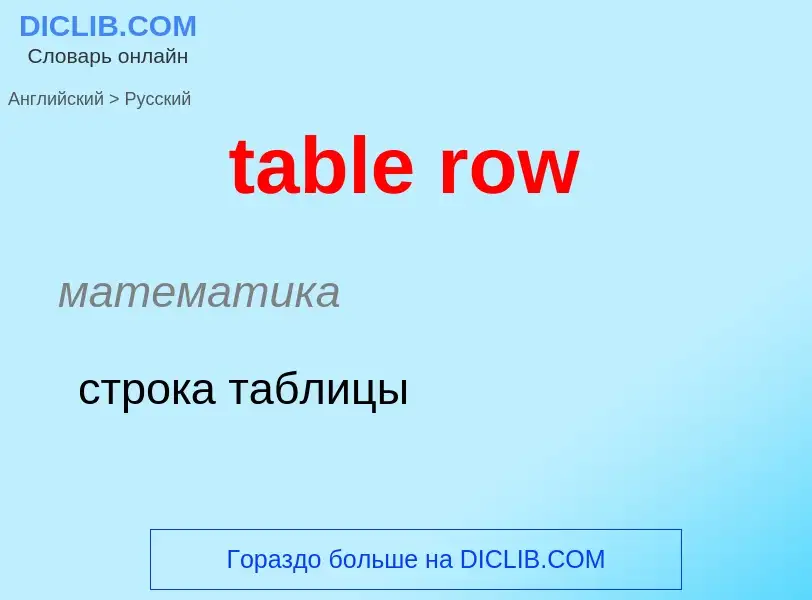Перевод и анализ слов искусственным интеллектом
На этой странице Вы можете получить подробный анализ слова или словосочетания, произведенный с помощью лучшей на сегодняшний день технологии искусственного интеллекта:
- как употребляется слово
- частота употребления
- используется оно чаще в устной или письменной речи
- варианты перевода слова
- примеры употребления (несколько фраз с переводом)
- этимология
table row - перевод на русский
математика
строка таблицы
общая лексика
номер записи
номер, идентифицирующий запись для последующих операций с нею
сейсмология
порядковый номер записи
Смотрите также
Определение
Википедия
In the context of a relational database, a row—also called a tuple—represents a single, implicitly structured data item in a table. In simple terms, a database table can be thought of as consisting of rows and columns. Each row in a table represents a set of related data, and every row in the table has the same structure.
For example, in a table that represents companies, each row would represent a single company. Columns might represent things like company name, company street address, whether the company is publicly held, its VAT number, etc. In a table that represents the association of employees with departments, each row would associate one employee with one department.
The implicit structure of a row, and the meaning of the data values in a row, requires that the row be understood as providing a succession of data values, one in each column of the table. The row is then interpreted as a relvar composed of a set of tuples, with each tuple consisting of the two items: the name of the relevant column and the value this row provides for that column.
Each column expects a data value of a particular type. For example, one column might require a unique identifier, another might require text representing a person's name, another might require an integer representing hourly pay in dollars.

